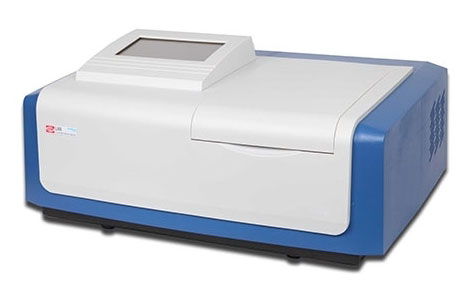Calibration of UV Spectrophotometer
UV spectrophotometer is a commonly used photometer product. With it, light of different wavelengths can be arbitrarily selected in the ultraviolet-visible region. The instrument has the advantages of stable performance, flexible use, high reliability, and easy maintenance. The UV spectrophotometer needs to be calibrated when in use. The following is the calibration method of the UV spectrophotometer.
How to calibrate the UV spectrophotometer?
One of the most important physical and chemical quantities of spectrophotometry is absorbance. In order to obtain accurate research results, it is very important to accurately measure the absorbance of the sample solution. Generally speaking, the unreliability of the analysis results is related to accidental and systematic errors. Accidental error affects the precision of the measurement, but it can be reduced by statistical processing of a sufficient number of measurements. System error affects the accuracy of measurement results. When measuring, you can compare the accurate measurement results of a substance under roughly the same experimental conditions to unify the system errors. However, the influence of the systematic (wavelength correction, slow astigmatism of spectrophotometer, linear response of amplifier, dark current and optical path of cuvette) and operational errors (temperature change, instrument reading, operator change, purity of the substance used, weighing and concentration, pH) of the spectrophotometer on the measured absorbance can be checked and corrected. Regarding the operating error, in most cases, it can be controlled or reduced by strictly following the operating procedure measurement, instrument zero adjustment, accurate weighing, etc. The system error of the instrument can be overcome by regular calibration of the spectrophotometer. If high accuracy measurements are required, the instrument must be calibrated daily.
Absorbance calibration
A solution of a certain concentration of a very pure substance is commonly used as the standard for correcting absorbance, and the absorbance coefficient of this solution is checked by different laboratories. In order to prevent the absorbance of the standard solution from being changed by the slight shift of the measuring wavelength, a substance with a smoother absorption peak is often selected. At the same time, the solution is required to be stable, and the change in absorbance in a considerable wavelength range conforms to the Beer-Lambert law. Therefore, solutions of copper sulfate, cobalt ammonium sulfate and sodium or potassium nitrate are commonly used. Potassium chromate solution is the most commonly used standard solution. This solution is suitable for both ultraviolet and visible regions.
Wavelength or wavenumber calibration
Solutions with narrow absorption bands, filters or vapors can be used to correct the required light wave range. If a high precision is required, the radiation emitted by the discharge bulb can be used for correction. Some spectrometers have been equipped with a light for calibration. Benzene vapor is also useful for calibrating a certain range of wavelengths. Therefore, in the measurement, a small drop of benzene can be placed in a one-centimeter-thick absorption cup to measure its absorption wavelength. In the far ultraviolet region, the absorption band of oxygen can be used for correction. Various rare earth metal filters can also be used as well, which can quickly correct the wavelength, but the accuracy is not as high as the above method. The commonly used filter is a filter containing holmium, neodymium and praseodymium ions.
Stray light calibration
A small amount of stray light will often cause larger measurement errors. It can be corrected with a solution that can completely absorb monochromatic light of a certain wavelength, and absorb very weakly at other wavelengths. The approximate value of stray light can be inferred based on the light transmission of this solution. The false absorption band caused by stray light can also be checked by Beer-Lambert law. However, using this law to check the false absorption band has a large error. Approximate percentage of stray light can be obtained from the transmittance outside the cut-off range. If the stray light contained is greater than 0.1%, try to reduce it or correct the measured absorbance. The error caused by stray light is proportional to the stray radiation, so the correction value can be easily calculated from the nearly correct curve of the compound. In addition, an appropriate filter can be used. The filter is completely transparent in the measurement wavelength range, but absorbs light waves outside this range, thereby eliminating stray light.

